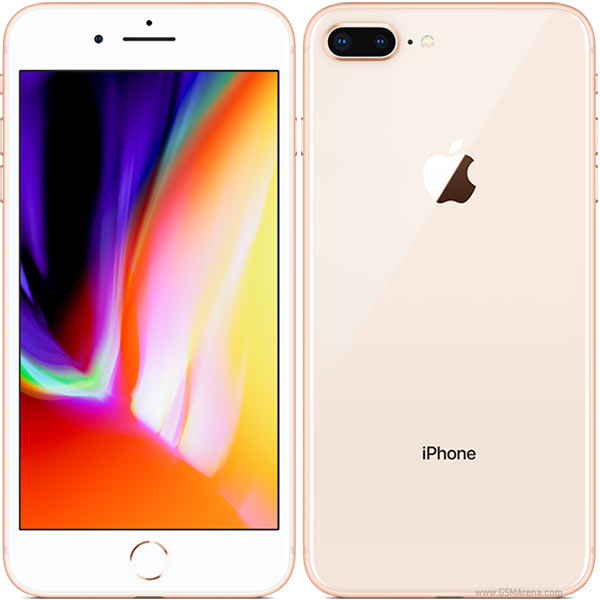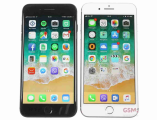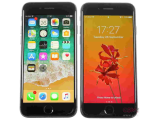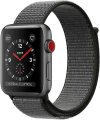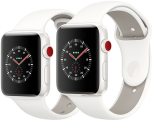
Apple iPhone 8 Plus 64 GB Prices
Important Note.
- All prices are in Pakistani Rupee (PKR)
- Prices may vary at stores and our effort will be to provide you with the updated prices.
- The latest price of Apple iPhone 8 Plus 64 GB was obtained on 17 مئی, 2019. The prices at the original stores had been updated on the respective mentioned dates.
- Find out WhatMobile price has dropped in Pakistan by selecting Notify Price Drop button
- Find out WhatMobile has better specifications by clicking Add To Compare Button find out what Mobile has better reviews by visiting our reviews section
- Find out WhatMobile is cheaper on which retailer by clicking Compare prices from retailers button
Search Terms
- Apple iPhone 8 Plus 64 GB
Specifications
| GENERAL | |
| 2G Network | GSM 850 / 900 / 1800 / 1900 |
|---|---|
| 3G Network | HSDPA 850 / 900 / 1700(AWS) / 1900 / 2100 |
| 4G Network | LTE band 1(2100), 2(1900), 3(1800), 4(1700/2100), 5(850), 7(2600), 8(900), 12(700), 13(700), 17(700), 18(800), 19(800), 20(800), 25(1900), 26(850), 28(700), 29(700), 30(2300), 34(2000), 38(2600), 39(1900), 40(2300), 41(2500), 66(1700/2100) |
| Sim | Nano-SIM - IP67 certified - dust and water resistant - Water resistant up to 1 meter and 30 minutes - Apple Pay (Visa, MasterCard, AMEX certified) |
| Announced | 12/09/2017 |
| Status | Available. Released 2017, September |
| BODY | |
| Dimensions | 158.4 x 78.1 x 7.5 mm (6.24 x 3.07 x 0.30 in) |
| Weight | 202 g (7.13 oz) |
| DISPLAY | |
| Display Size | 5.5 inches, 83.4 cm2 (~67.4% screen-to-body ratio) |
| Resolution | 1080 x 1920 pixels, 16:9 ratio (~401 ppi density) |
| MultiTouch | Yes |
| Protection | Ion-strengthened glass, oleophobic coating - Wide color gamut display - 3D Touch display & home button - True-tone display |
| SOUND | |
| AlertTypes | Vibration, proprietary ringtones |
| LoudSpeaker | Yes, with stereo speakers |
| 3.5mm jack | No - Active noise cancellation with dedicated mic - Lightning to 3.5 mm headphone jack adapter |
| MEMORY | |
| CardSlot | No |
| Internal | 64 GB, 3 GB RAM |
| DATA | |
| GPRS | Yes |
| EDGE | Yes |
| Speed | HSPA 42.2/5.76 Mbps, LTE-A (3CA) Cat12 600/150 Mbps, EV-DO Rev.A 3.1 Mbps |
| WLAN | Wi-Fi 802.11 a/b/g/n/ac, dual-band, hotspot |
| Blue Tooth | 5.0, A2DP, LE |
| NFC | Yes (Apple Pay only) |
| USB | 2.0, proprietary reversible connector |
| CAMERA | |
| Camera Primary | Dual: 12 MP (f/1.8, 28mm, OIS) + 12 MP (f/2.8, 57mm), phase detection autofocus, 2x optical zoom, quad-LED dual-tone flash |
| Camera Features | Geo-tagging, simultaneous 4K video and 8MP image recording, touch focus, face/smile detection, HDR (photo/panorama) |
| CameraVideo | 2160p@24/30/60fps, 1080p@30/60/120/240fps |
| CameraSecondary | 7 MP (f/2.2, 32mm), 1080p@30fps, 720p@240fps, face detection, HDR |
| FEATURES | |
| Processor Cores | Hexa-Core |
| OS | iOS 11, upgradable to iOS 11.2 |
| CPU | Hexa-core (2x Monsoon + 4x Mistral) |
| Sensors | Fingerprint (front-mounted), accelerometer, gyro, proximity, compass, barometer |
| Messaging | iMessage, SMS (threaded view), MMS, Email, Push Email |
| Browser | HTML5 (Safari) |
| Radio | No |
| GPS | Yes, with A-GPS, GLONASS, GALILEO, QZSS |
| Java | No |
| Colors | Gold, Space Gray, Silver |
| Others | - Fast battery charging: 50% in 30 min - Qi wireless charging - Siri natural language commands and dictation - iCloud cloud service - MP3/WAV/AAX+/AIFF/Apple Lossless player - MP4/H.265 player - Audio/video/photo editor - Document editor |
| BATTERY | |
| Battery | Non-removable Li-Ion 2691 mAh battery (10.28 Wh) |
| TalkTime | Up to 21 h (3G) |
| MISC | |
Reviews
03/10/2017 - 3:26pm

There used to be a time - way back in the dark ages - when a flagship phone only came in one model. I know, I know, weird huh? Nowadays every major (and most minor) smartphone manufacturer is offering larger screen “plus” offerings.
For Apple, it's the iPhone “Plus” series. Samsung has a similar Galaxy “+” series distinct from the firm's Galaxy Note phablet range, although by now they're very similar in size and design.
The latest models of both these lines are now out. Of course, I’m talking about the iPhone 8 Plus and the Samsung Galaxy S8+. While the Samsung Galaxy S8+ came out earlier this year, Apple only released its iPhone 8 Plus at its annual September iPhone event last month.
But now that both phones are out how do they compare? We took a look to find out.
iPhone 8 Plus vs Samsung Galaxy S8+: Specs
Here’s the specs for the iPhone 8 Plus:
- Display: 5.5in Retina HD display with 1920x1080 resolution at 401ppi, 3D Touch enabled
- Dimensions: 158.4mm x 78.1 mm x 7.5 mm
- Weight: 202 grams
- Storage: 64 or 256GB
- Memory: 3 GB RAM
- Processors: A11 Bionic
- Front camera: 7 MP
- Rear camera: 12 MP Dual Lens telephoto and wide-angle
- Battery: 2675 mAh, Wireless charging
And here’s the specs for the Samsung Galaxy S8+:
- Display: 6.2in 2960×1440 P-OLED at 529 ppi
- Dimensions: 159.5mm x 73.4 mm x 8.1 mm
- Weight: 173 grams
- Storage: 64 or 128 + microSDXC up to 256GB
- Memory: 4 or 6 GB RAM
- Processors: Qualcomm Snapdragon 835 or Exynos 8895
- Front camera: 8 MP
- Rear camera: 12 MP Dual Lens telephoto and wide-angle
- Battery: 3500 mAh, Wireless charging
There’s no denying it, the Samsung Galaxy S8+ has the bigger and better display; a 2960×1440 P-OLED at 529 ppi. Its screen is much better than the iPhone 8 Plus’ 1920x1080 resolution at 401ppi. Of course, the Galaxy S8+ also has another big screen advantage; its edge-to-edge design, but I’ll talk about that more below.
The Samsung Galaxy S8+ also offers more in the RAM department, coming with either 4GB or 6GB of RAM (region dependent). That’s versus the 3GB RAM found in the iPhone 8 Plus. But on the processing power front the iPhone 8 Plus strikes back in a major way with its A11 Bionic chip with neural engine. The A11 absolutely obliterates the Snapdragon 835 and Exynos 8895, in my view.
Both phones come in 64GB storage models, but the Galaxy S8+ is available in a 128GB option (region dependent). The iPhone 8 Plus, on the other hand, comes in a 256GB option. Finally, the Galaxy S8+ supports microSDXC cards up to 256GB–something the iPhone does not.
iPhone 8 Plus vs Samsung Galaxy S8+: Display & Design
We already mentioned the superior resolution of the Samsung Galaxy S8+’s display, but the other huge advantage of it is that it’s a near bezel-less, edge-to-edge screen. The iPhone 8 Plus still has those massive forehead and chin bezels. Of course, Apple has done away with the bezels on the new iPhone X, but we aren’t comparing that phone here.
Because of that edge-to-edge screen, the Samsung Galaxy S8+ doesn’t take up that much larger of a footprint than the iPhone 8 Plus and Samsung's device comes in weighing over 10% less than the iPhone 8 Plus.
The Samsung Galaxy S8+ has the bigger battery at 3500 mAh (versus the 2675 mAh cell found in the iPhone 8 Plus). Because of that, the Samsung Galaxy S8+ should see a few hours extra of talk and music playback time. But keep in mind, battery life for either phone will vary widely depending on what you use the device for.
Both phones also feature wireless charging, which is nice as the tech gains more adoption and wireless charging pads can be found in more places.
iPhone 8 Plus vs Samsung Galaxy S8+: Cameras
As far as front cameras go, the Samsung Galaxy S8+ beats the iPhone 8 Plus by 1MP with its 8MP front camera (the 8 Plus’ is 7MP); not really a significant difference. But when we get to the rear camera, the iPhone 8 Plus clearly wins with its dual-camera system, featuring seperate 12MP telephoto and wide-angle lenses working in tandem. The Samsung Galaxy S8+ only features a single 12MP system, it's still impressive, but doesn't have the same fancy tricks as the iPhone. Both phones, however, shoot 4K video.
iPhone 8 Plus vs Samsung Galaxy S8+: Cost
Unlocked the iPhone 8 Plus will cost £799 (64GB) and £949 (256GB). The Samsung Galaxy S8+ will cost £779 for the 64GB model. The Samsung Galaxy S8+ wins on the display and RAM front. However, the iPhone 8 Plus wins on the CPU and camera front. That makes it a very tough call. As always, the deciding factor may just come down to whether you prefer Android or iOS.
Write Your Own Review
My Recent Reviews
- Be first to post review for this product.
comments powered by Disqus





